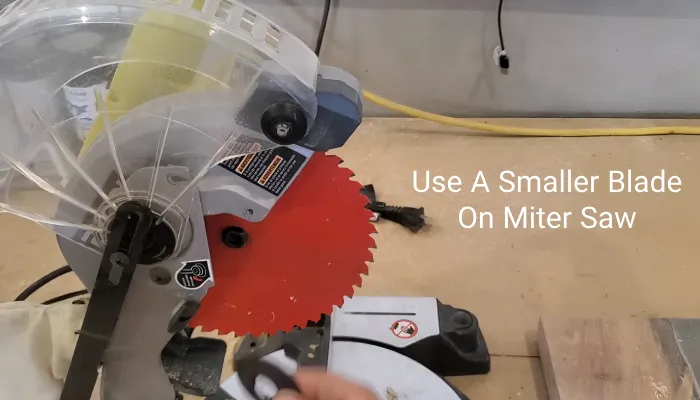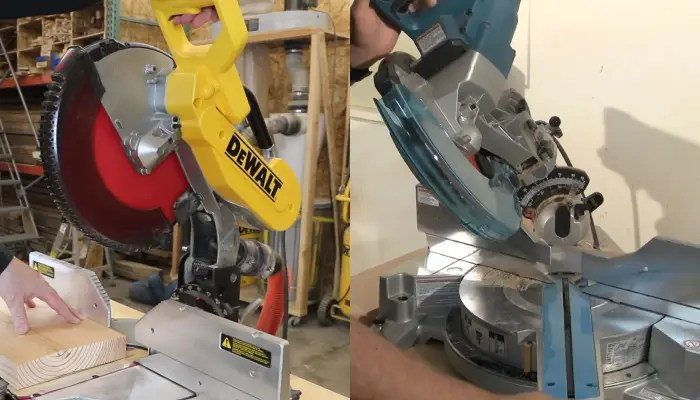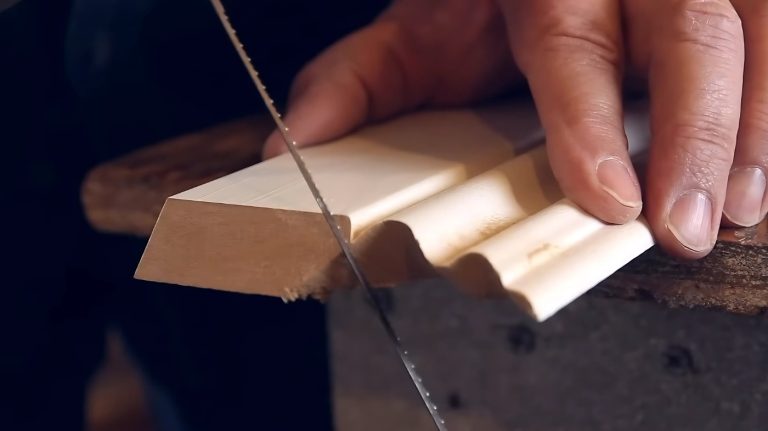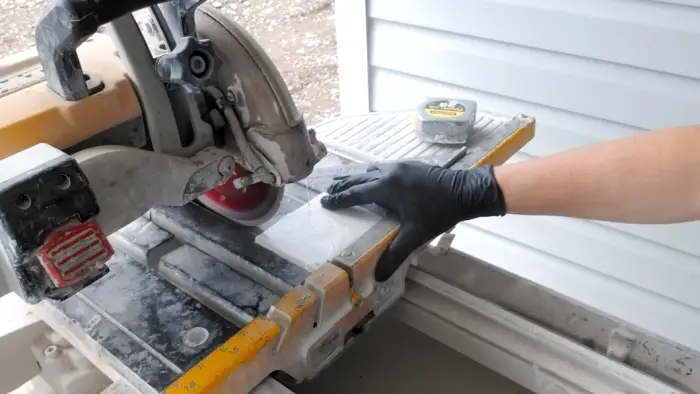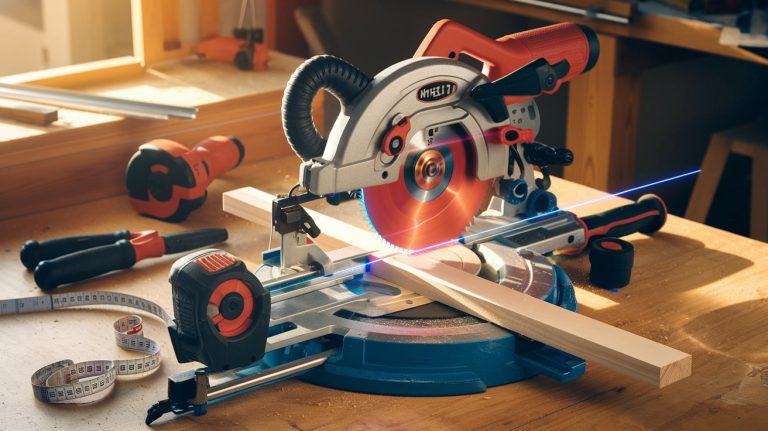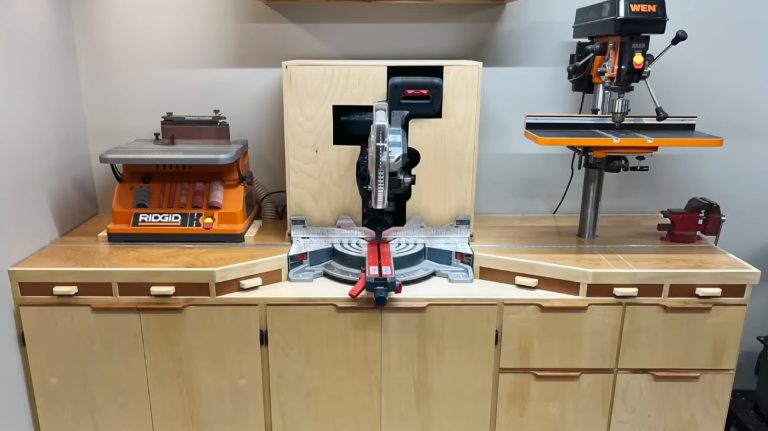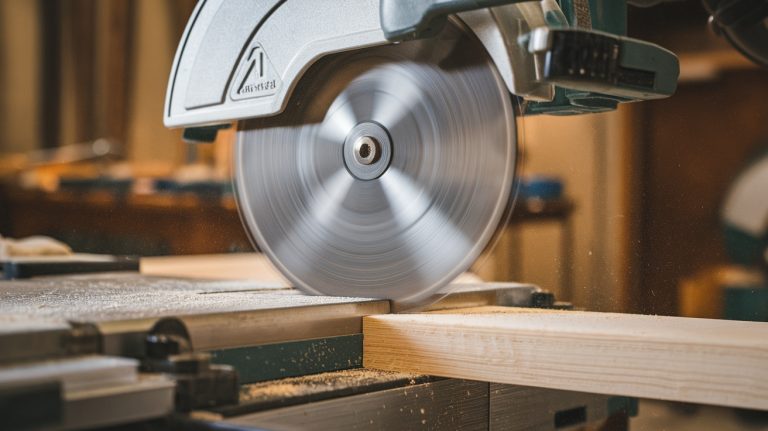Can I Use a Smaller Blade on My Miter Saw: 6 DIY Steps for Installation
Are you wondering if you can use a smaller blade on your miter saw to achieve different results? Generally, your miter saw can use a smaller blade as long as the bore is correct. The bore refers to the hole in the blade’s center that fits onto the saw’s arbor.
If the bore size matches, you can safely use a smaller blade. However, there are a few things to consider. Smaller blades may initially run faster due to their mass being closer to the axis of rotation, but the RPM of a smaller blade will be the same as that of a larger blade.
But remember that you should only use smaller circular saw blades when the difference in size is fairly negligible. Using a significantly smaller blade may affect the performance and accuracy of your cuts.
As part of this article, we will explore the steps to install a small blade on your miter saw. So keep reading to unlock the secrets of using a smaller blade on your miter saw.
How to Install a Small Blade on a Miter Saw: Steps to Follow
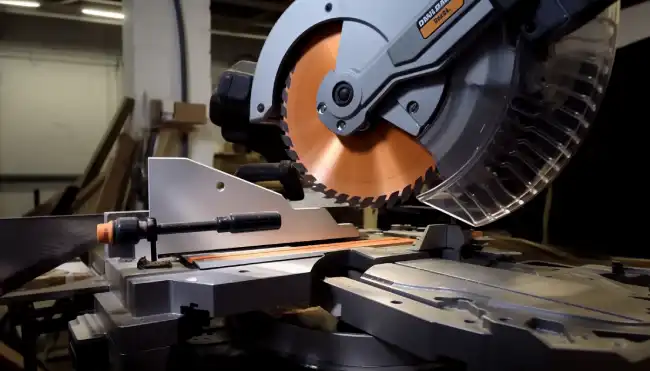
It’s important to follow these steps carefully before installing a small blade on your miter saw:
- Step 1: Take proper safety precautions
- Step 2: Prepare the necessary tools
- Step 3: Remove the old saw blade
- Step 4: Install the new small blade
- Step 5: Final checks the alignments
- Step 6: Test the saw
Let’s discuss these steps in detail:
Step 1: Take Proper Safety Precautions
First, you’ll want to prioritize your safety by ensuring the miter saw is unplugged and wearing appropriate safety gear. This is important before installing a smaller blade on your miter saw.
Unplugging the saw eliminates the risk of accidental start-up and potential injury. Safety gear, such as safety glasses and gloves, are essential to protect yourself from flying debris and potential accidents.
It is also crucial to know the specific safety requirements for your miter saw model, as different saws may have different safety features and precautions.
Step 2: Prepare the Necessary Tools
Now gather all the tools you’ll need for the blade replacement, such as a wrench, Allen wrench, and the new blade. The wrench, typically a 10mm size, will loosen and tighten the blade nut.
Depending on your specific miter saw model, the combination wrench or Allen wrench will secure the arbor shaft while removing the blade nut. This will prevent the arbor from spinning while you work.
You’ll also need the new blade that you intend to install. Make sure it is the correct size and compatible with your miter saw. All these ready tools will ensure a smooth and efficient blade replacement process.
Step 3: Remove the Old Saw Blade
Once you have gathered all the equipment, remove the old saw blade. Begin by rotating the blade guard to its highest position, ensuring easy access to the blade area.
Next, engage the spindle lock to secure the spindle in place fully. This will prevent any unwanted movement during the blade removal process. Take the appropriate wrench and turn the blade bolt counterclockwise to loosen it.
Be aware that the bolt may have a left-hand thread, so you must turn it in the opposite direction. Carefully remove the bolt with the accompanying washer once the bolt is loosened.
Step 4: Install the New Small Blade
Now that you’ve successfully removed the old saw blade, it’s time to install the smaller blade. Start by checking the new blade for direction arrows that indicate the correct rotation. Make sure to align these arrows with the rotation direction of your miter saw.
Once you’ve done that, place the new blade onto the spindle. Follow this by sliding the washer onto the spindle and then the bolt. Remember, the bolt has a left-hand thread, so you must tighten it by turning it clockwise.
While pressing the spindle lock to prevent rotation, use the wrench to tighten the bolt securely. Take a moment to ensure that the blade is properly seated on the spindle.
Step 5: Final Checks the Alignments
To ensure proper alignment, ensure the arrow on the new blade is pointing in the same direction as the rotation of your miter saw. This is crucial as it ensures the blade will cut smoothly and effectively.
Once you have confirmed the arrow’s alignment, it’s time to perform some final checks to ensure everything is in order. Start by examining the blade bolt to ensure it is tightened securely. This is essential for safe operation.
Next, disengage the spindle lock to allow the spindle to rotate freely. Finally, double-check that the miter saw is plugged in and ready for testing.
Step 6: Test the Saw
Make sure you briefly turn on the miter saw without cutting any material to test if the blade is spinning smoothly and correctly aligned. When you switch on the saw, listen for unusual noises or vibrations. A smoothly spinning blade indicates that the installation process was successful and that the saw is ready for use.
It may be misaligned or damaged if you notice any issues with the blade, such as wobbling or grinding sounds. In such cases, addressing the problem before proceeding with your cutting tasks is important.
Limitations of Installing a Smaller Blade on a Miter Saw
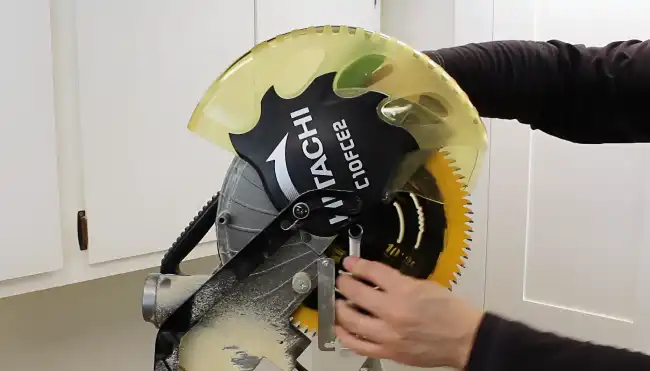
When using a small blade on a miter saw, there are some limitations you need to consider:
Compatibility of Blades:
One major limitation of installing a small blade on a miter saw is that not all blades are compatible with every saw model. Different saws have varying blade sizes, arbor sizes, and rotation direction specifications.
If you choose a blade incompatible with your specific saw, you could inadvertently create safety hazards or cause damage to the saw itself.
Alignment and Tension:
Alignment and tension are other limitations when utilizing a small blade on a miter saw. Improper alignment of the blade can lead to wobbling or vibrations during operation, which can cause inaccurate cuts or even lead to safety hazards.
Also, inadequate tension on the bolt can cause the blade to become loose, compromising safety and cutting accuracy.
Does blade size matter on a miter saw?
Blade size does matter on a miter saw because it determines the maximum cutting capacity. Using a smaller blade on a miter saw may limit the length of cuts you can make.
Larger diameter blades, such as the 10 or 12 inch ones, can make longer cuts compared to the 8 inch blade. The tooth count of the blade is also important, as it affects the type of work you can do.
Blades with higher tooth counts are typically used for fine woodworking, while blades with fewer teeth are better suited for rough cutting. When choosing the blade size for your miter saw, it is essential to consider your specific cutting needs and the materials you will be working with.
Can I put a 7.25″ blade on a 10 inch miter saw?
You can put a 7.25′ blade on your 10 inch miter saw without any issues. Although the blade size is smaller than the saw’s capacity, it can still be used effectively. With a smaller blade, you will have a reduced depth of cut, meaning you won’t be able to cut as deep into the material.
Also, the rim speed of the blade will be slightly reduced, which can decrease the risk of burning the wood but may slightly increase the chances of tearing out. However, these effects are negligible and should be fine for most woodworking tasks.
Can I use a 10 inch blade on a 12 inch miter saw?
If you have a 12 inch miter saw, you can put a 10 inch blade on it. The saw was originally sold with a 12 inch blade, but it is designed to accommodate blades of different sizes. You need to ensure that the arbor size of the 10 inch blade matches the arbor size of the saw.
Typically, a 10 inch blade will have a 5/8 inch arbor, the most common size for miter saws. However, double-checking the arbor size is always a good idea before purchasing a new blade.
Also, keep in mind that using a smaller blade may limit the cutting capacity of your saw, so make sure the 10 inch blade is suitable for the types of cuts you will be making.
Importance of Miter Saw Blade Size: Considerations for Optimal Results and Safety
Using a smaller blade on your miter saw is possible but has limitations. While it may seem like a quick fix to save money or accommodate a smaller project, it’s important to consider the potential risks of using a miter saw blade.
Blade size matters on a miter saw, affecting its cutting capacity and performance. It’s best to consult the manufacturer’s guidelines and use the recommended blade size for optimal results.
Precision and safety should always be a top priority when using power tools. So, choose wisely and happy cutting.

